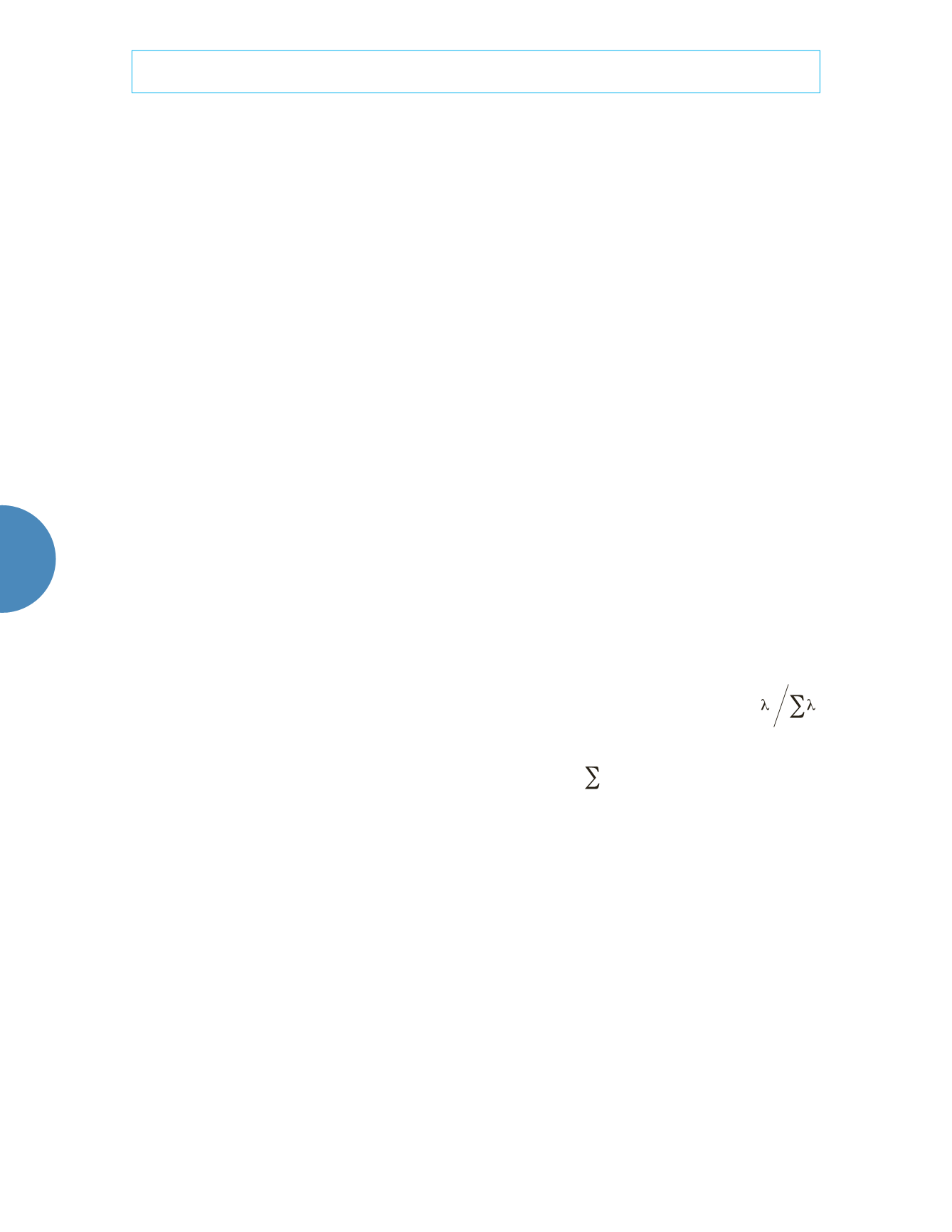
122
Tecnología y Ciencias del Agua
, vol. VIII, núm. 2, marzo-abril de 2017, pp. 117-126
Wang
et al
.,
Simulation for non-point source pollution based on QUAL2E in the Jinghe River, Shaanxi Province, China
•
ISSN 2007-2422
study area, and two water quality parameters,
ammonia nitrogen (NH
4
+
-N) and nitrate nitro-
gen (NO
3
−
-N), were chosen as nitrogen nutrient
indices to calculate the diffuse source pollution
load in this study by combining the results of
PCA for the water quality variables.
The water quality data from the Water Envi-
ronment Monitoring Center of Shaanxi Provin-
cial Hydrologic Bureau indicated that the aver-
age water temperature of the two monitoring
stations in June each year was approximately
20 °C (lower than 20 °C for Jingcun and higher
than 20 °C for Zhangjiashan, with the tempera-
ture difference between them not exceeding 1
°C). Concentrations of nitrite nitrogen were
very low in both sections, therefore nitrifying
reactions of nitrite nitrogen were disregarded,
but only the denitrifying effect of NO
3
−
-N was
taken into account. Equation (13) was used to
calculate the degradation coefficients of NH
4
+
-N
and NO
3
−
-N, based on the values for the year
when the precipitation in June was low and on
the average values for many years at 20 °C. To
account for the impact of temperature on water
quality parameters, the degradation coefficients
for each month of each year were calculated
using equation (12).
Principal component analysis (PCA) and
factor analysis (FA)
River pollution is a complex process comprised
of several water quality parameters that may
interact with each other. This implies that it
may not be possible to obtain accurate results
because of colinearity between the parameters.
PCA groups the original parameters into a few
mutually-independent comprehensive indices
by a linear transformation to simplify the data
and improve the reliability of the analysis re-
sults (Wu
et al
., 2014; Xiaohua, Ruiming, & Yong,
2008). PCA has been applied in recent years to
assess surface water quality in combination with
other multivariate statistical analysis, such as
cluster analysis (CA), factor analysis (FA), and
discriminant analysis (DA) (Li, Wu, & Qian,
2013a; Li, Qian, Wu, Zhang, & Zhang, 2013b;
Ouyang, 2005; Ouyang, Nkedi-Kizza, Wu,
Shinde, & Huang, 2006; Shrestha & Kazama,
2007); it has also been used in non-point source
load forecasting along with multiple regression
analysis (Geladi & Kowalski, 1986). In particu-
lar, FA has been integrated with a water quality
model to study the distribution of point and
non-point sources of nutrients in surface water
(Azzellino
et al
., 2006). To highlight spatial and
temporal changes in water quality in different
periods of a year, the SPSS software (version
16.0) was used for PCA and FA of water quality
parameters in dry and wet seasons. The analysis
involved the following five main steps, as fol-
lows (Li
et al
., 2013a; Li
et al
., 2013b; Wu
et al
.,
2014):
1. An original data matrix was set up (
M
ij
(
I
= 1, 2,…,
n
;
j
= 1, 2,…,
p
)) with
n
samples
and
p
indices, which were standardized to
ensure that they all had equal weights in the
analysis.
2. The covariance matrix
R
jk
was calculated.
3. The eigenvalues (
λ
k
(
k
= 1, 2,…,
p
)) and cor-
responding eigenvectors (
L
k
(
k
= 1, 2,…,
p
))
were derived.
4. The variance contribution rate
T
k
=
k
k
i
=1
p
and the cumulative variance contribution
rate
D
k
=
T
i
i
=1
k
were calculated, and the prin-
cipal components that corresponded to the
eigenvalues
l
1
,
l
2
,...,
l
m
(
m
<
p
) were selected
for
Dk
≥ 85%.
5. The factor loading matrix was developed
and a vari
max
rotation was performed on the
factor loading matrix to infer the principal
parameters. In this study, only those factors
that had an eigenvalue greater than one were
retained.
Data sources
In this study, 16 sets of monitoring data from
the Jingcun and Zhangjiashan sections in the
Shaanxi Reach of the Jinghe River were selected
for the analysis. We used data from Nov 2001


